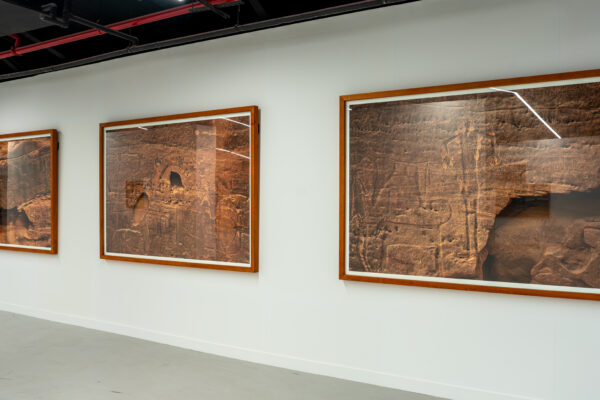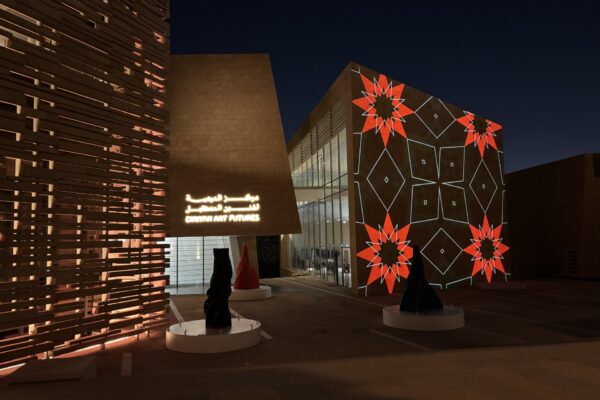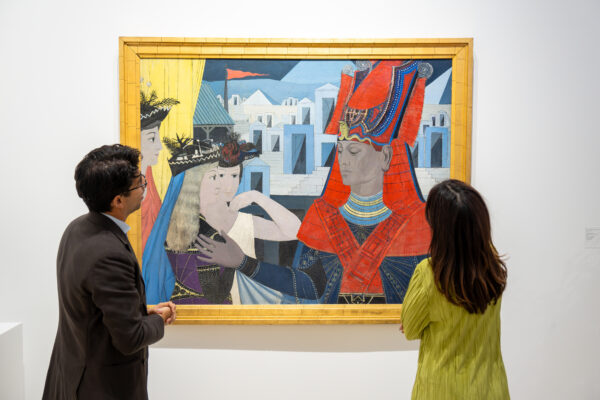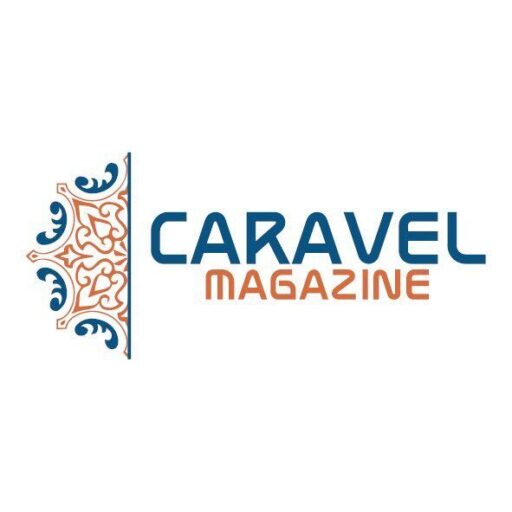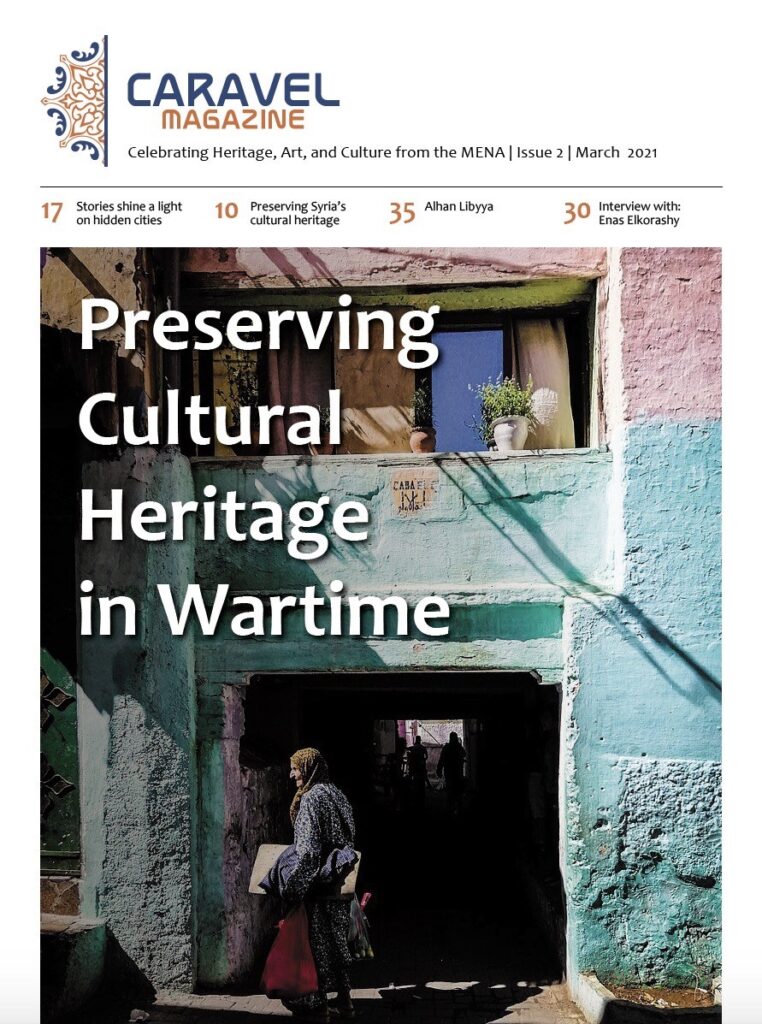Interview with Alfredo Cramerotti, Director of The Media Majlis at Northwestern Qatar.
Alfredo Cramerotti, a renowned cultural entrepreneur and curator, is currently the Director of The Media Majlis at Northwestern Qatar. This museum stands at the intersection of media, technology, and contemporary art. With an impressive global portfolio of advisory and leadership roles—including President of the International Association of Curators of Contemporary Art (IKT) and advisor to the UK Government Art Collection and the KSA Visual Arts Commission—Cramerotti deeply understands how art and media shape our world. His most recent exhibition at The Media Majlis, titled The Limits of My Language Are the Limits of My World, dives into the complexities and influence of the Arabic language, highlighting its cultural and social significance across time and media.
In this interview, Cramerotti shares insights into the inspiration behind the exhibition, its significance in today’s world, and how The Media Majlis continues to foster a dialogue around the evolving relationship between language, identity, and media in the digital age.
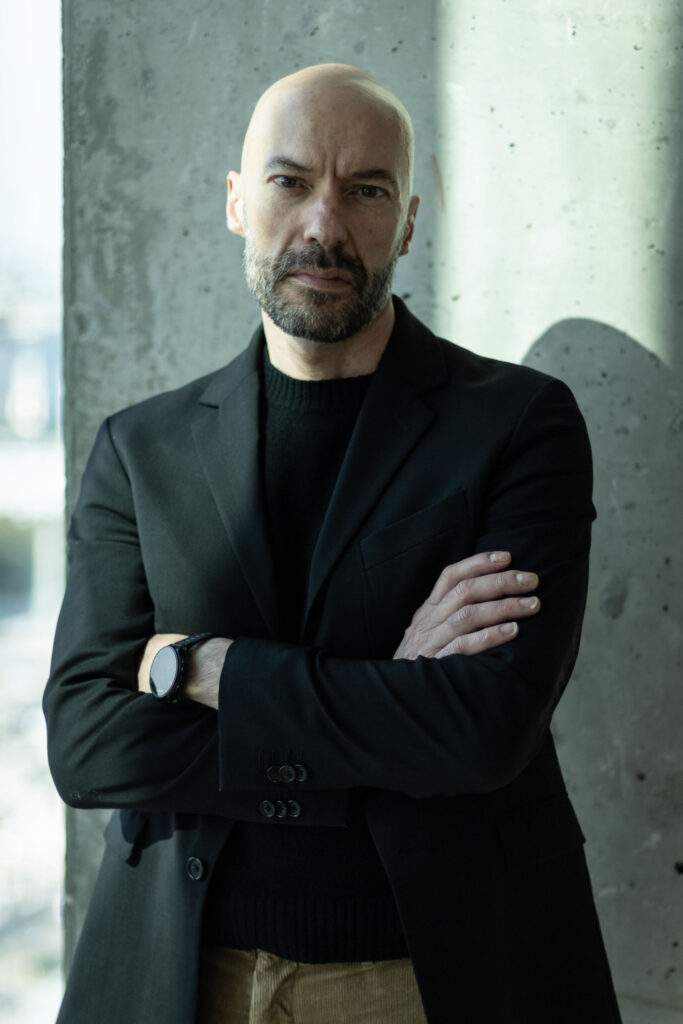
The exhibition “The limits of my language are the limits of my world” delves into the evolving state of the Arabic language in a globalized, digital age. What inspired Media Majlis Museum to focus on this particular theme, and what do you hope visitors will take away from it?
The limits of my language are the limits of my world explore the evolving state of the Arabic language in a globalized, digital age. It contemplates the significance, influence, and impact of the Arabic language, which is spoken by over 400 million people daily. Arabic has long united people across diverse nationalities and backgrounds, with its rich nuances reflected in various dialects and formats. Throughout history, the language has shaped global narratives in politics, social relations, trade, and science, going beyond being merely the lingua franca of the Arab world to influencing both collective and individual identities. However, in today’s digital and globalized world, Arabic faces challenges like misrepresentation across media platforms.
The exhibition aims to spark a broader discussion about the future of the Arabic language, encouraging visitors to reflect on its evolving role in society. It prompts questions about how Arabic can maintain its prominence and who bears the responsibility for its preservation and growth, from policymakers to the media and educators.
As the Arab world’s only museum dedicated to media and communication, how does Media Majlis Museum balance art, technology, and cultural preservation, particularly about the Arabic language?
As the Arab world’s only museum dedicated to media and communication, Media Majlis Museum at Northwestern Qatar aims to embrace a forward-thinking approach that transcends traditional museum roles and speaks to a wide and young generation of future professionals. The museum fosters intellectual exploration, promotes open dialogue, and inspires innovation at the intersection of art, communication, and technology thanks to its diverse range of exhibitions. Our program, in fact, integrates digital narratives and content with physical works of art and objects, aspiring to engage a broader public.
The museum’s global outlook drives it to actively seek partnerships and collaborations with experts, institutions, and artists from around the world, with a special focus on perspectives from the Global South. This ensures that its exhibitions offer a wide range of viewpoints on global issues, including the evolving role of the Arabic language in a digital and globalized world.
The exhibition features a variety of interactive elements and commissioned artworks from artists across the Arab world and beyond. How do these diverse contributions enhance the narrative and objectives of the exhibition?
Our exhibition incorporates several interactive elements to engage visitors in a unique and personal journey through the exploration of the Arabic language. For example, we developed the Takween Mural in collaboration with Akwan and Lujain Abulfaraj. This life-size interactive mural is based on the patented Takween toy, a modular magnetic block set that allows visitors of all ages to form Arabic letters and words through play.
This interactive installation not only fosters a deeper appreciation for the Arabic language but also inspires a genuine passion for its beauty and intricacy. By engaging with these elements, visitors can create a unique and personal connection with the content, enhancing their overall experience in the exhibition.
Given the challenges of misrepresentation and fragmentation that the Arabic language faces, what role do you see institutions like Media Majlis Museum playing in shaping the future of the language and its preservation?
The ongoing debate on the conservation and protection of Arabic is especially relevant in today’s context, particularly within our region. In response to Law No. 7 of 2019, issued by His Highness Sheikh Tamim bin Hamad Al Thani, the Amir of Qatar, which outlines guidelines for safeguarding Arabic in public and private institutions, Media Majlis Museum is positioned as a leading hub in promoting and nurturing the development of the Arabic language, especially for the next generation. By creating platforms for intellectual exploration and dialogue, the museum not only preserves the language but also ensures its growth and adaptation in a rapidly changing global landscape.
In curating this exhibition, what were some of the key challenges or surprises you encountered in presenting the complexities and nuances of the Arabic language? How did the collaboration with curator Amal Zeyad Ali shape the final vision of the exhibition?
The exhibition was curated by the talented curator and alumna Amal Zeyad Ali. Presenting the complexities of the Arabic language was indeed a challenge and an extremely rewarding process. One of the key challenges was addressing the multifaceted nature and nuances of Arabic. How to convey its rich history, diverse dialects, and significant cultural and personal meanings? How to represent the difficulties it faces in the modern world, particularly in comparison to dominant languages like English? The exhibition wanted to present these questions and activate a conversation about the growth of Arabic in a globalized context, inviting visitors to engage with these issues and consider the language’s future.
Amal’s deep expertise and knowledge of the Arabic language were instrumental in bringing the exhibition to life. Her understanding of the language’s beauty, diversity, and complexity helped to craft a narrative that not only showcases Arabic’s historical influence but also emphasizes its ongoing challenges with misrepresentation and fragmentation.

